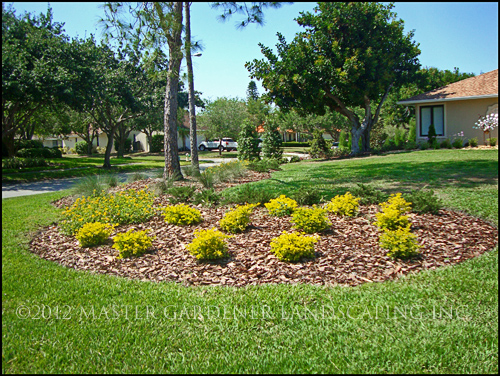War on Weeds: Part 1 “Weeds Happen”
 I am convinced that if the statesman Benjamin Franklin were to coin his famous saying on inevitability today, he would have declared “In this world nothing can be said to be certain, except death and taxes…and weeds.”
I am convinced that if the statesman Benjamin Franklin were to coin his famous saying on inevitability today, he would have declared “In this world nothing can be said to be certain, except death and taxes…and weeds.”
With the next few posts I hope to bring a practical view on the subject of weed control from the perspective of someone who has spent more years than I care to count in the field dealing with customers’ weed concerns and literally waging war on weeds.
What is a weed?
First off I want to establish what, in my opinion, a weed is. I’m sure there are many definitions but to me a weed is any plant whose characteristics conflict with the purpose and appearance of a given area. For example, many times I’ve seen where a lone Sabal palm volunteer has grown, been trimmed, and allowed to remain and grow to maturity. This was likely because it happened to grow in a spot where it was either not degrading the appearance of an existing landscape or not being a nuisance in some other practical way like impeding pedestrian or vehicular traffic.
At first thought, you may not consider that a weed, it is the official state tree of Florida after all. But consider this, one Sabal palm will drop a lot of seeds, which land on the ground and each seed has the potential of growing into a baby Sabal palm. Right away they grip the soil like a tent pin, sometimes they will pull up by the roots, and sometimes not. They become an eyesore in a well maintained landscape as small weeds, eventually some will grow at varying heights among the existing ornamental plants, and compete for nutrition and domination. Seems like a weed to me!
The point is that certain ornamental plants and trees have characteristics that can cause them to become a nuisance. Some characteristics may include the dropping of seeds which easily turn into babies such as Carrotwood and Schefflera trees. Suckering growth off of root masses such as Wax Myrtle and Live Oak trees will often come up in planting beds and can fairly be called weeds.
How Weeds Happen
If your goal is to keep weeds out of your planting beds as much as possible, you must first understand where they originate from and some of the ways they are spread. In subsequent posts I will outline some possible solutions in preventing, or at least minimizing weed problems.
- Existing Land - One of the biggest problems people face in battling weeds is the land itself. Some properties are naturally more weed bearing than others. Sometimes it is hard to know what activities took place on your land in the past. On the other hand, many people around PinellasCounty do know. In St. Pete Beach for example, fill was dredged up from around the bay. In that case, naturally there is a lot of shell mixed in with the sand, making it a hard compacted surface, also high in calcium therefore making it a very alkaline soil. All of these factors make it a good growing medium for weeds.
- Fill Dirt - New construction in the last couple of decades has required a lot more fill dirt to be hauled in from who knows where due to elevation requirements related to flood control. In turn the landscapers must bring in dirt or topsoil to bring the grade up to meet hardscape areas such as driveways and sidewalks. This of course introduces weeds from other locations to your yard by way of seeds and rhizomes (rootstock).
- Neighboring Properties - Yes, blame it on the neighbors! Oftentimes interlopers are introduced by way of unwanted seeds or runners from a neighboring lawn. And of course if they make it into your lawn they can eventually migrate to your planting beds. Seed transfer is caused by wind, foot traffic, birds, and mowing, especially now that hardly anybody bags their grass anymore. Seed transfer by mower is especially common if you use a lawn service since the grass and weeds seeds from previous lawns can get trapped inside the mower deck and then deposited onto your lawn.
- Previous Lawns - Before the St. Augustine revolution in the mid 1970′s, common Bermudagrass, Centipede, Zoysia, and Bahiagrass were the cultivars used for lawns. Bermudagrass was especially popular and since it has roots as deep as 18” you can understand why it is so difficult to eradicate from planting beds that are infested with it.
- Mulch - In my experience bulk mulch products, especially Cypress mulch, have been a carrier of Torpedograss and Nutsedge seeds and/or rhizomes. I don’t know why exactly, although it likely is from the processing location. Fortunately, I haven’t had the same problem with bagged mulch products.
So now that you know where the weeds come from, the next step is to develop strategies to prevent or remove them that will work in your landscape. The next couple of posts will delve into this topic.

 Master Gardener Landscaping, Inc. was founded in 2000 to provide well designed landscape installation and care to Tampa Bay area homes, condos and businesses. Led by Eric Morrison, a St. Petersburg, Florida native and Pinellas County resident with over 40 years’ experience in the landscape industry, we take the time to care for landscapes with environment and climate in mind, assuring a more healthy and easy to care-for landscape. We are proud to be celebrating our 20th year. We look forward to many more.
Master Gardener Landscaping, Inc. was founded in 2000 to provide well designed landscape installation and care to Tampa Bay area homes, condos and businesses. Led by Eric Morrison, a St. Petersburg, Florida native and Pinellas County resident with over 40 years’ experience in the landscape industry, we take the time to care for landscapes with environment and climate in mind, assuring a more healthy and easy to care-for landscape. We are proud to be celebrating our 20th year. We look forward to many more.